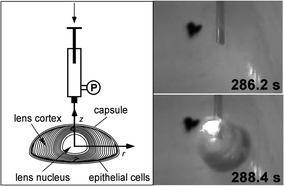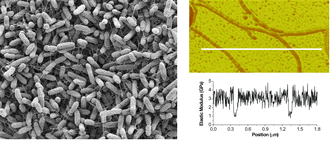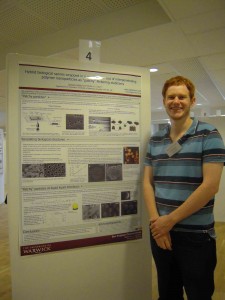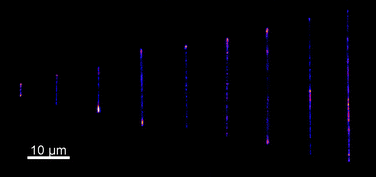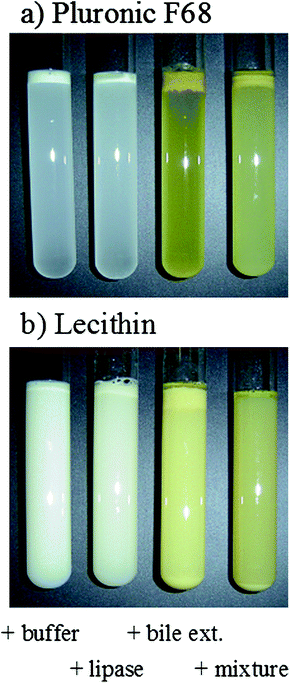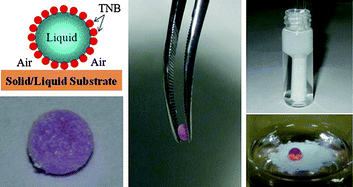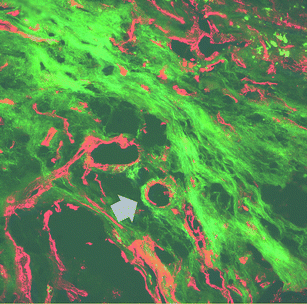In a recent talk, Sravanti Uppaluri discussed her work looking at the motility of Trypanosoma brucei brucei and how this affects the swimming motion of the parasites. The results have been published in PLoS Computational Biology.
Trypanosomes are bloodstream parasites. Found in Africa (T. Brucei) and South America (T. cruzi) , trypanosomes infect mammals via an insect vector. In Africa, this is the tsetse fly and infection results in the potentially fatal disease African trypanosomiasis, more commonly known as sleeping sickness. The parasite intially enters the blood stream before passing through the blood-brain barrier and invading the central nervous system.
Trypanosomes swim using a flagellum, which runs along the length of the cell. Uppaluri found that swimming cells have three different motility modes: tumbling walkers, persistent walkers and intermediate walkers. These motility modes correlate with the shape of the cell and their mean end-to-end length. Tumblers have no persistence in direction and no well-defined orientation. In the videos Uppaluri showed, the cells appeared to move in small circles or knots going nowhere. Persistent walkers on the other hand are highly directional; they swim for hundreds of micrometres without changing their trajectory. The cells are orientated, with the flagellum tip leading in the swimming direction. For persistent walkers, the cells appear stretched or elongated, with a mean end-to-end length 1.5 times greater than that of tumblers, which appear more bent. No tumbling is observed for persistent walkers. Intermediate walkers have an intermediate behaviour with periods of directional swimming interspersed with periods of tumbling.
Uppaluri suggests that the different motility modes arise from variations in the cell stiffness, with persistent cells having three times more flexural rigidity than tumblers. The flagellum of persistent walkers were also found to move at around twice the velocity of tumbling walkers.
The motility mode and cell properties may play a role in tissue invasion of the trypanosomes, when they pass through the blood-brain barrier. They may also be important for finding nutrients or removing host antibodies. Further work, however, is required before any definite conclusions can be made.

SEM of a red blood cell (red) and a T. cyclops (green). T. cyclops infects Monkeys and is found in South-east Asia. It has a very similar form to T. brucei. T. cyclops is not, however, infectious to man.
Related papers in Soft Matter
Effect of helicity on wrapping and bundling of semi-flexible filaments twirled in a viscous fluid, S. Clark and R. Prabhakar, 2011 (doi:10.1039/C1SM05269A).
Colloids in a bacterial bath: simulations and experiments, C. Valeriani, M. Li, J. Novosel, J. Arlt and D. Marenduzzo (doi:10.1039/C1SM05260H).
Image taken from: Separation of parasites from human blood using deterministic lateral displacement, S.H. Holm et al., Lab Chip, 2011, 11, 1326-1332, (doi:10.1039/c0lc00560f).
Comments Off on Running and tumbling
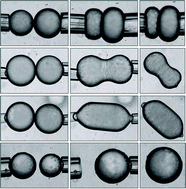 The following articles are part of an upcoming Themed Issue on Dynamics and Rheology of Fluid Interfaces with Professor Gerald Fuller (Stanford University, USA) and Professor Jan Vermant (K.U. Leuven, Belgium) as the Guest Editors. Read them for free here until 20 August…
The following articles are part of an upcoming Themed Issue on Dynamics and Rheology of Fluid Interfaces with Professor Gerald Fuller (Stanford University, USA) and Professor Jan Vermant (K.U. Leuven, Belgium) as the Guest Editors. Read them for free here until 20 August…